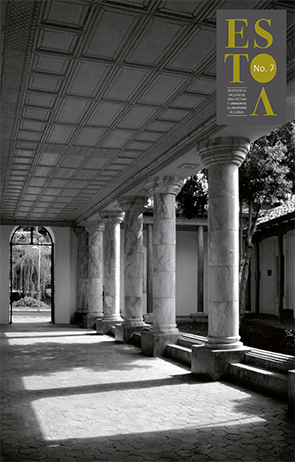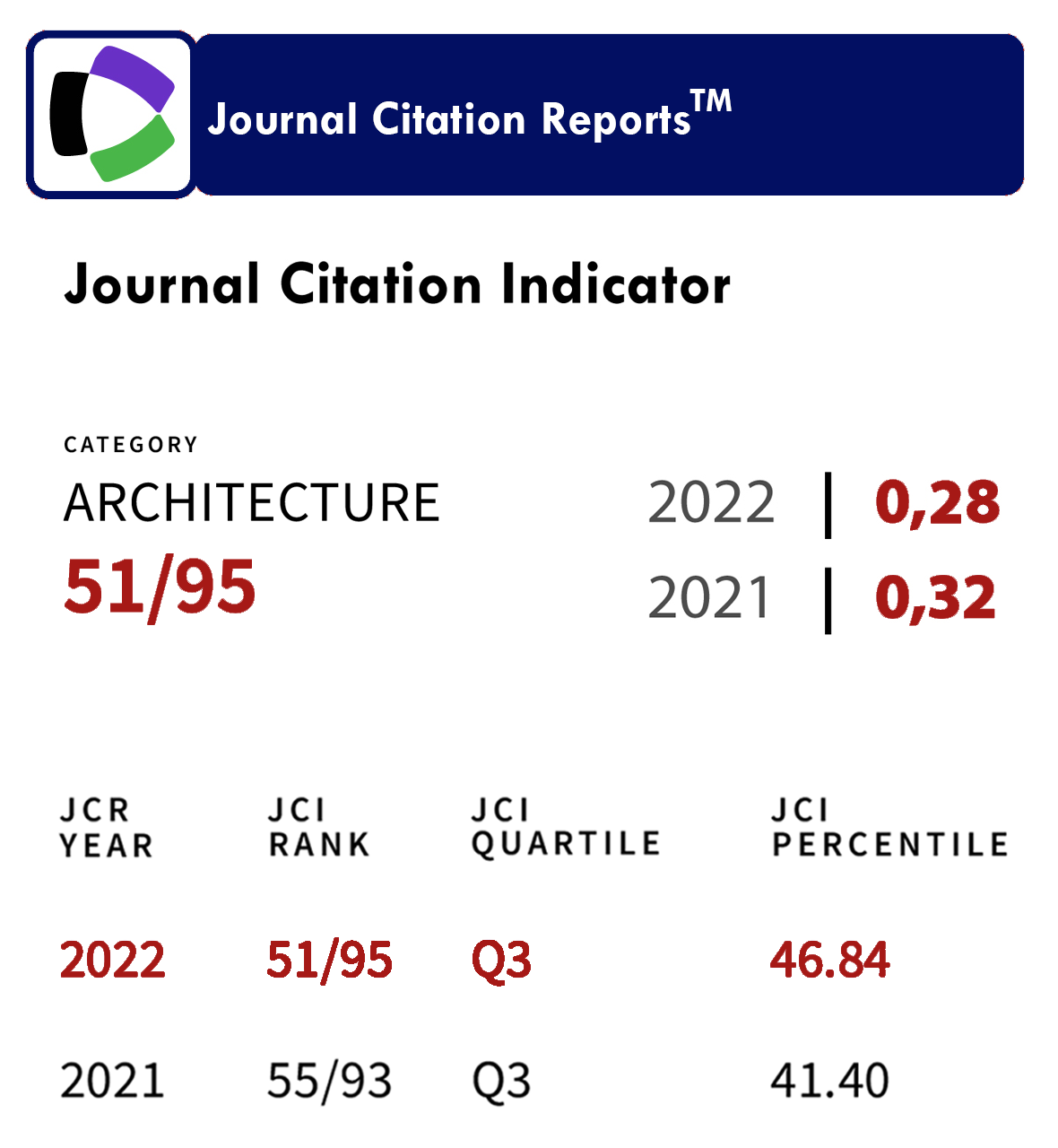Energetic efficiency in residential buildings
DOI:
https://doi.org/10.18537/est.v004.n007.07Abstract
This investigation is a review on the state of art about worldwide energy consumption in residential buildings and analyzes policies, energy efficiency strategies and the most influential sustainable methods of evaluation as: Leed, Breeam, Verde, Casbee and Qualitel, that have emerged in order to mitigate the environmental impact and reduce energy consumption maintaining optimum comfort conditions. Based on the category “Energy” certification methods, it has been identified the variables that have the greatest impact on housing energy consumption, so that it can be assessed the energy performance in every aspect. Among the most important we have: thermal envelope, lighting, water heating, appliances, HVAC, renewable energy, and others.
Keywords: Energy efficiency, energy, energy certification, thermal comfort, sustainable housing.Downloads
References
Aldossary, N. a., Rezgui, Y., & Kwan, A. (2014). Domestic energy consumption patterns in a hot and humid climate: A multiple-case study analysis. Applied Energy, 114, 353–365. http:// doi.org/10.1016/j.apenergy.2013.09.061
Aldossary, N. a., Rezgui, Y., & Kwan, A. (2015). An investigation into factors influencing domestic energy consumption in an energy subsidized developing economy. Habitat International, 47, 41–51. http://doi. org/10.1016/j.habitatint.2015.01.002
Annual Energy Review 2011. (2012).
BRE. (2011). BREEAM (Building Research Establishment Environment Assessment Methodology). Building Research Establishment (BRE) Reino Unido.
Bryden, A. (2007). Standards for a sustainable energy future. In Energy efficiency and renewable sources: How International
Standards help.
Cellura, M., Guarino, F., Longo, S., & Mistretta, M. (2015). Different energy balances for the redesign of nearly net zero energy buildings:
An Italian case study. Renewable and Sustainable Energy Reviews, 45, 100–112. http://doi.org/10.1016/j.rser.2015.01.048
Comisión Europea. (2010). Directiva 2010/31/ UE relativa a la eficiencia energética de los edificios.
Deng, S., Wang, R. Z., & Dai, Y. J. (2014). How to evaluate performance of net zero energy building - A literature research. Energy, 71, 1–16. http://doi.org/10.1016/j. energy.2014.05.007
Diakaki, C., Grigoroudis, E., & Kolokotsa, D. (2008). Towards a multi-objective optimization approach for improving energy efficiency in buildings. Energy and Buildings, 40(9), 1747–1754. http://doi.org/http:// dx.doi.org/10.1016/j.enbuild.2008.03.002
Doukas, H., Nychtis, C., & Psarras, J. (2009). Assessing energy-saving measures in buildings through an intelligent decision support model. Building and Environment, 44(2), 290–298. http://doi.org/10.1016/j. buildenv.2008.03.006
GBC, U. (2010). LEED for Homes Rating System Multifamily Mid-Rise. US Green Building Council.
GBCe. (2012). VERDE (Valoración de Eficiencia de Referencia De Edificios). Green Building Council España.
Ghezloun, A., Saidane, A., Oucher, N., & Chergui, S. (2013). The Post-Kyoto. Energy Procedia, 36, 1–8. http://doi.org/10.1016/j.
egypro.2013.07.002
Gylling, G., Knudstrup, M., Heiselberg, P. K., & Hansen, E. K. (2011). Measuring sustainable homes - a Mixed Methods approach. Media, (April), 20–24.
Hogeling, J., & Dijk, D. Van. (2007). P40, 1–10.
Hu, Y., & Monroy, C. R. (2012). Chinese energy and climate policies after Durban: Save the Kyoto Protocol. Renewable and Sustainable Energy Reviews, 16(5), 3243–3250. http://doi. org/10.1016/j.rser.2012.02.048
ICC, I. C. C. (2011). 2012 International Energy Conservation Code.
Ionescu, C., Baracu, T., Vlad, G.-E., Necula, H., & Badea, A. (2015). The historical evolution of the energy efficient buildings. Renewable and Sustainable Energy Reviews, 49, 243–253. http://doi.org/10.1016/j.rser.2015.04.062
Iwaro, J., & Mwasha, A. (2010). A review of building energy regulation and policy for energy conservation in developing countries. Energy Policy, 38(12), 7744–7755. http://doi. org/10.1016/j.enpol.2010.08.027
Kanellakis, M., Martinopoulos, G., & Zachariadis, T. (2013). European energy policy—A review. Energy Policy, 62, 1020–1030. http://doi.org/10.1016/j. enpol.2013.08.008
Koirala, B. S., Bohara, A. K., & Berrens, R. P. (2014). Estimating the net implicit price of energy efficient building codes on U.S. households. Energy Policy, 73, 667–675. http://doi.org/10.1016/j.enpol.2014.06.022
Lee, W. L., & Burnett, J. (2006). Customization of GBTool in Hong Kong. Building and Environment, 41(12), 1831–1846. http://doi.
org/10.1016/j.buildenv.2005.06.019
Melo, a. P., Sorgato, M. J., & Lamberts, R. (2014). Building energy performance assessment: Comparison between ASHRAE standard 90.1 and Brazilian regulation. Energy and Buildings, 70, 372–383. http://doi. org/10.1016/j.enbuild.2013.11.080
Mikucioniene, R., Martinaitis, V., & Keras, E. (2014). Evaluation of energy efficiency measures sustainability by decision tree method. Energy and Buildings, 76, 64–71. http://doi.org/10.1016/j.enbuild.2014.02.048
Molina, F. Q. (2014). la vivienda : Análisis comparativo de cinco métodos internacionales comparative analysis of five international methods, 56–67.
Normalización, O. I. De. (2009). Normas Internacionales y « normas privadas » . F. Rudhard.
Oecd/Iea. (2014). Energy Efficiency Indicators : Fundamentals on Statistics, 387. Retrieved from http://www.iea.org/ termsandconditionsuseandcopyright/
Olesen, B. W., & De Carli, M. (2011). Calculation of the yearly energy performance of heating systems based on the European Building Energy Directive and related CEN standards. Energy and Buildings, 43(5), 1040–1050. http://doi.org/10.1016/j. enbuild.2010.10.009
QUALITEL, A. (2012). Qualitel: Habitat & Environment. Qualitel et Habitat & Environment de CERQUAL.
Rosen, D., & Taffin, C. (2015). Promoting energy efficiency in housing: policies in the U.S. and France. Housing Finance International, 34–41. Retrieved from http://search.ebscohost.com/l o g i n . a s p x ? d i r e c t = t r u e & d b = b t h & A N = 1 0 1 8 9 1 104&lang=es&site=eds-live
Shaikh, P. H., Nor, N. B. M., Nallagownden, P., Elamvazuthi, I., & Ibrahim, T. (2014). A review on optimized control systems for building
energy and comfort management of smart sustainable buildings. Renewable and Sustainable Energy Reviews, 34, 409–429. http://doi.org/10.1016/j.rser.2014.03.027
Skalko, S., Heiss, H. W., Beach, D. M., Humble, J., Bixby, D. C., Kennedy, S. D., … Lutz, J. D. (2006). 2006 S UPPLEMENT Energy-Efficient Design of Low-Rise Residential Buildings.
Suzer, O. (2015). A comparative review of environmental concern prioritization: LEED vs other major certification systems. Journal of Environmental Management, 154, 266–283. http://doi.org/10.1016/j.
jenvman.2015.02.029
Turiel, I., Chan, T., & McMahon, J. E. (1997). Theory and methodology of appliance standards. Energy and Buildings, 26(1),
35–44. http://doi.org/10.1016/S0378- 7788(96)01023-7
USBC. (2014). CASBEE (Comprehensive Assessment System for Building Environmental Efficiency). Japan GreenBuild Council. Retrieved from http://www.ibec.or.jp/CASBEE/english/
Waide, P., Lebot, B., & Hinnells, M. (1997). Appliance energy standards in Europe. Energy and Buildings, 26(1), 45–67. http://doi. org/10.1016/S0378-7788(96)01013-4
Zhou, L., Li, J., & Chiang, Y. H. (2013). Promoting energy efficient building in China through clean development mechanism. Energy Policy, 57, 338–346. http://doi.org/10.1016/j.enpol.2013.02.001
Zhu, Y., Song, L., & Damiens, J. (2013). State of the art of green building standards and labelling system development in China. International Journal of Sustainable Building Technology and Urban Development, 4(3), 178–184. http://doi.org/10.1080/209376
1X.2013.837216
Downloads
Published
How to Cite
Issue
Section
License
The Journal declines any responsibility for possible conflicts derived from the authorship of the works that are published in it.
The University of Cuenca in Ecuador conserves the patrimonial rights (copyright) of the published works and will favor the reuse of the same ones, these can be: copy, use, diffuse, transmit and expose publicly.
Unless otherwise indicated, all contents of the electronic edition are distributed under a Creative Commons Attribution-NonCommercial-ShareAlike 4.0 International License.






